

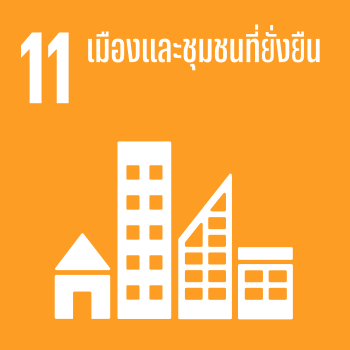
Handling Capacity
and Access to Airport
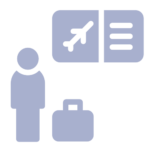
Customers
Business Partners

Shareholder, Investors, and Securities Analysts

Communities and Societies
Importance
Expanding the airport to accommodate more passengers and air cargo, as well as promoting access to the airport both as a form of travel and as a universal design for everyone, promotes economic growth along with respect for human rights, which creates benefits for all groups of stakeholders equally. However, expanding the airport requires public participation to hear opinions from the local community and establish guidelines/measures to mitigate and remedy the potential impact of the airport's construction and operations.
Management Approaches
Airport Capacity Development
AOT formulated the Airport Development Master Plans in line with the 20-year National Strategy Framework which were approved by the AOT Board of Directors, the Ministry of Transport, the Office of the National Economics and Social Development Council, and the Cabinet. The Airport Development Planning Department and every department under the Engineering and Construction Group are responsible for passenger handling capacity development according to the master plan that consists of 6 plans for all 6 AOT airports. The master plans are regularly reviewed to control the operation’s achievement according to the set goal and in line with the changing situation of the aviation industry. Currently, AOT has set long-term goals for AOT’s airport development plan until 2040.
Handling Capacity of all 6 AOT Airports
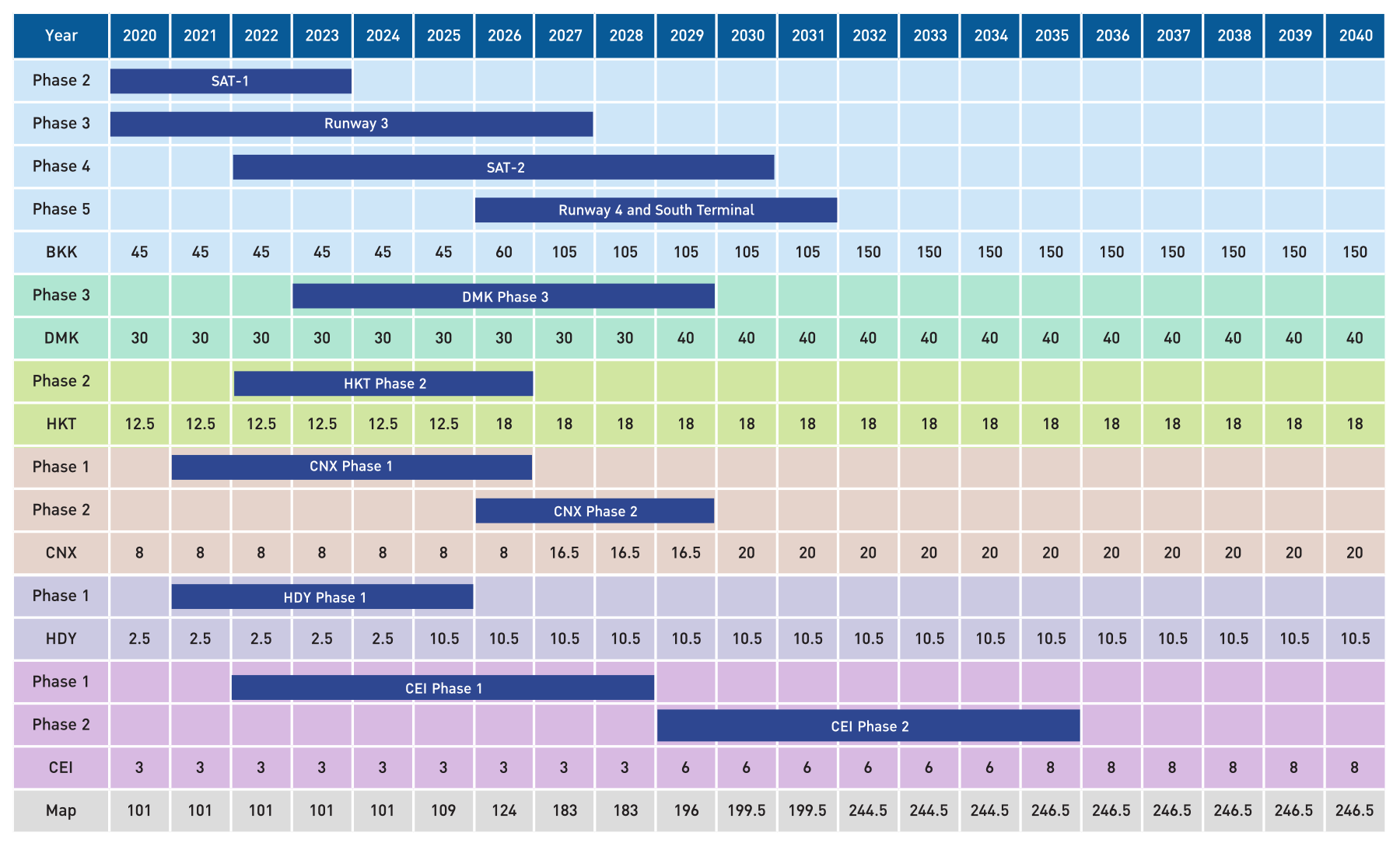
Unit: million people/year
Information as of the end of fiscal year 2022
Remark: Information shown in the above-mentioned table is a plan for the future which is subject to be reviewed and changed as appropriate.
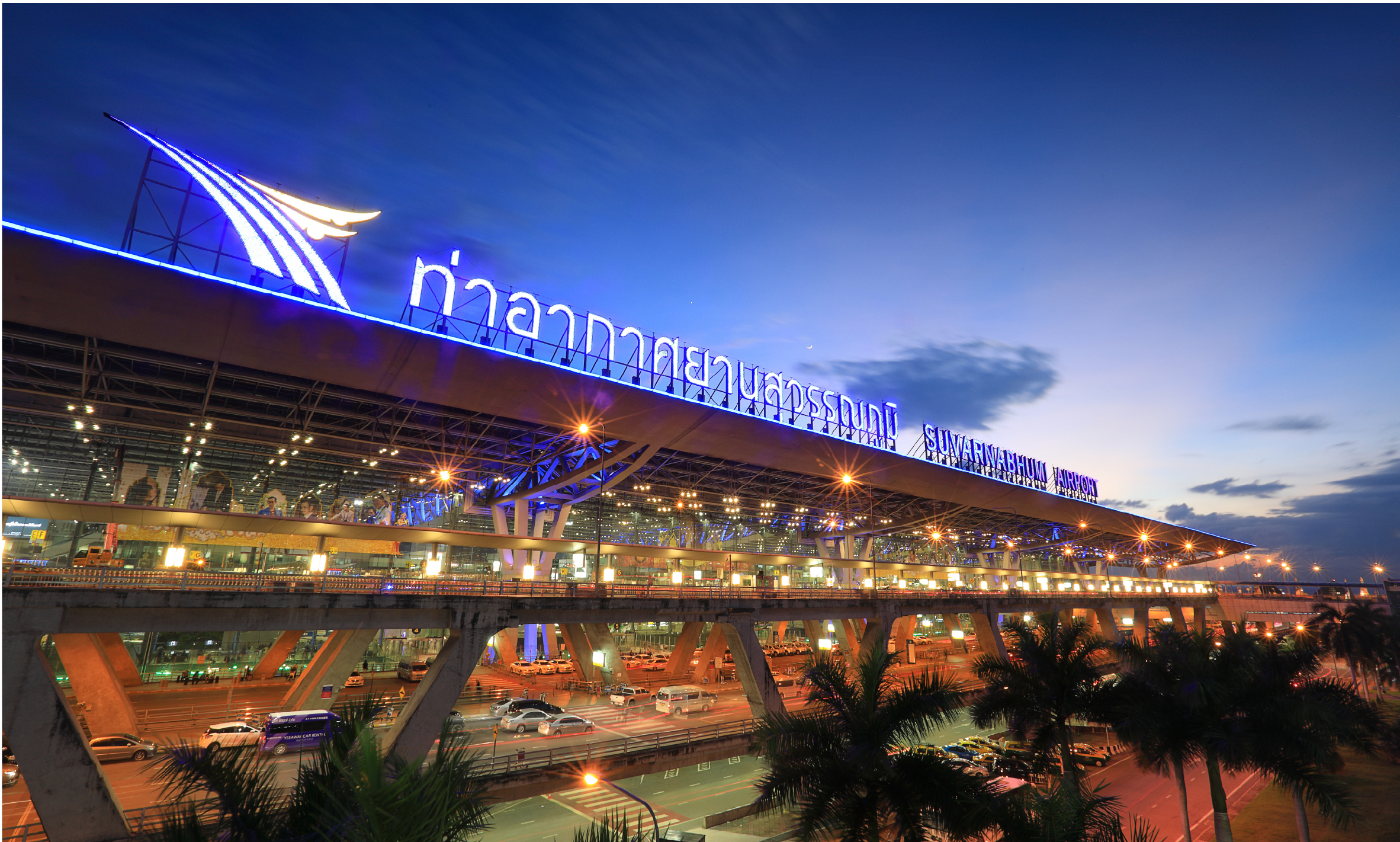
Suvarnabhumi Airport Development Master Plan
Currently, Suvarnabhumi Airport has its passenger handling capacity up to 45 million per year. Considering the potential growth in volume of flights and passengers of Suvarnabhumi Airport in the future, AOT needs to prepare the airport development master plan in consistent with the growth for the continual development of Suvarnabhumi Airport. The development is divided into 4 phases, as follows:
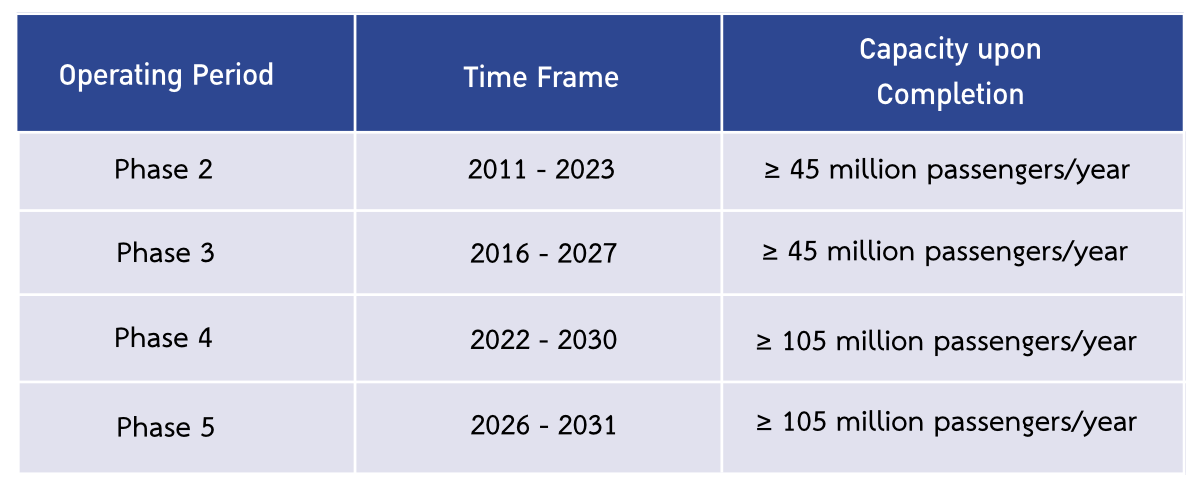
Current Capacity
Passengers/yr
45 million
94 flights
/ hour
Cargo and Postal Parcels of
1.7 million tons/yr
Target Capacity
in 2040
Passengers/yr
150 million
120 flights
/ hour
Cargo and Postal Parcels of
3 million tons/yr
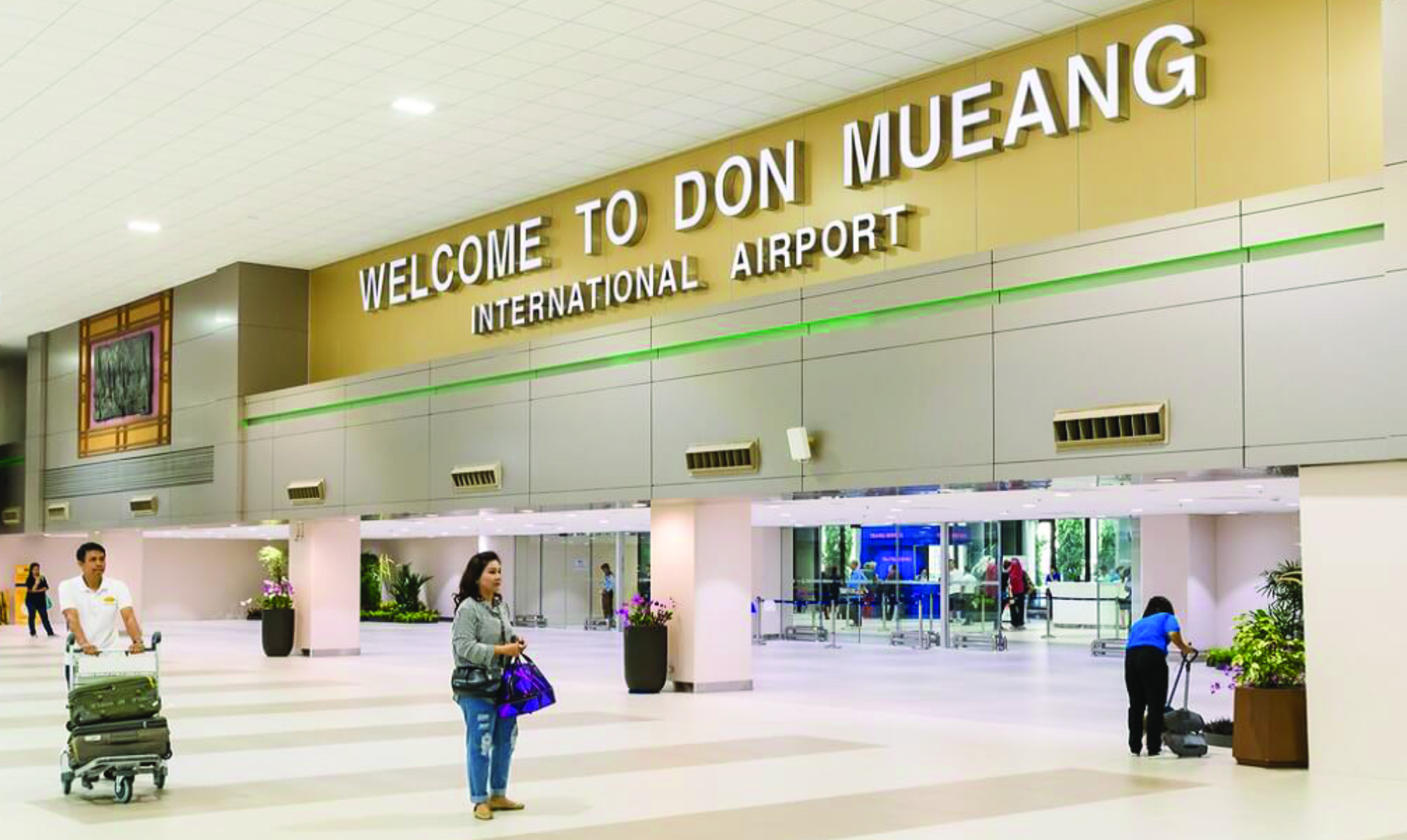
Don Mueang International Airport Development Master Plan
AOT developed Don Mueang International Airport Phase 2 which was completed in 2015 with its capacity to support 30 million passengers per year. Following the increasing numbers of flights and passengers in the future, AOT therefore, needs to increase the capacity of the airport under the airport development plan which is divided into 3 phases as follows:
Operating Period
Time Frame
Capacity upon Completion
Phase 3
2023 - 2029
≥ 40 million passengers/year
Current Capacity
Passengers/yr
30 million
50 flights
/ hour
Cargo and Postal Parcels of
520,000 tons/yr
Target Capacity
in 2040
Passengers/yr
40 million
50 flights
/hour
Cargo and Postal Parcels of
300,000 tons/yr

Chiang Mai International Airport Development Master Plan
At present, Chiang Mai International Airport has its capacity to accommodate up to 8 million passengers per year. Due to the volume of air traffic which is expected to increase, AOT has made a development plan, as follows:
Operating Period
Time Frame
Capacity upon Completion
Phase 1
2021 - 2026
≥ 8 million passengers/year
Phase 2
2026 - 2029
≥ 20 million passengers/year
Current Capacity
Passengers/yr
8 million
25 flights
/hour
Cargo and Postal Parcels of
35,000 tons/yr
Target Capacity
in 2040
Passengers/yr
20 million
25 flights
/hour
Cargo and Postal Parcels of
35,000 tons/yr
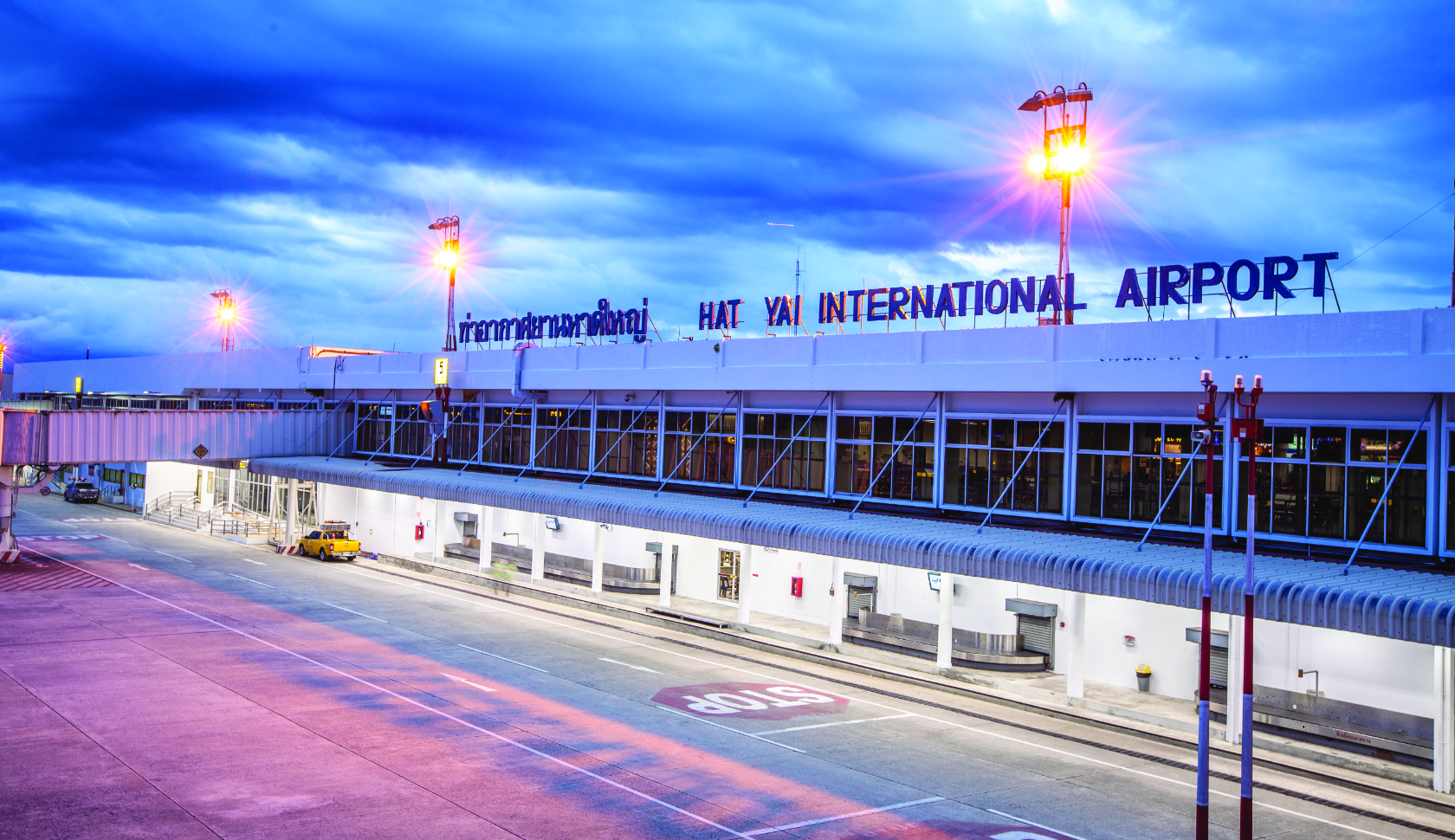
Hat Yai International Airport Development Master Plan
At present, Hat Yai International Airport has the capacity to accommodate up to 2.5 million passengers per year. Due to the future trend of increasing volumes of passengers and insufficiency of the parking bays and runway/taxiway systems along with the incapability of existing terminal to accommodate the future growth of passengers, AOT then has made a development plan to solve these problems, as follows:
Operating Period
Time Frame
Capacity upon Completion
Phase 1
2021 - 2025
≥ 10.5 million passengers/year
Current Capacity
Passengers/yr
2.5 million
2.5 flights
/hour
Cargo and Postal Parcels of
14,000 tons/yr
Target Capacity
in 2040
Passengers/yr
10.5 million
10.5 flights
/hour
Cargo and Postal Parcels of
14,000 tons/yr

Phuket International Airport Development Master Plan
Phuket International Airport can accommodate 12.5 million passengers per year. Considering the expected increasing volume of air traffic, Phuket International Airport needs to continue to develop as planned in Phase 2. However, the Phuket International Airport Development Phase 2 is to develop the airport’s areas to its maximum capacity, as follows:
Operating Period
Time Frame
Capacity upon Completion
Phase 2
2022 - 2026
≥ 18 million passengers/year
Current Capacity
Passengers/yr
12.5 million
20 flights
/hour
Cargo and Postal Parcels of
4,500 tons/yr
Target Capacity
in 2040
Passengers/yr
18 million
25 flights
/hour
Cargo and Postal Parcels of
4,500 tons/yr

Mae Fah Luang - Chiang Rai International Airport Development Master Plan
At present, Mae Fah Luang Chiang Rai International Airport has its capacity to accommodate up to 3 million passengers per year. Due to the exiting congestion problem of passenger’s service areas that have not yet been consistent with servicng standard, the development is to suitably reallocate the spaces within the building for services and improve the facilities before further development. The development process is divided into 2 phases, as follows:
Operation Period
Time Frame
Capacity upon Completion
Phase 1
2022 - 2028
≥ 3 million passengers/year
Current Capacity
Passengers/yr
3 million
11 flights
/hour
Cargo and Postal Parcels of
3.400 tons/yr
Target Capacity
in 2040
Passengers/yr
8 million
11 flights
/hour
Cargo and Postal Parcels of
5,300 tons/yr
Connecting to Relevant Transportation Systems
Facilitating the journey of passengers who wish to travel to and from the airport and connecting to the integrated ground transportation system It is an important factor in maximizing the efficiency of the country's infrastructure utilization. Reduce Travel time and promote the economic development around the airport. In addition, good traffic management will also help reduce traffic congestion in the communities surrounding the airport.
AOT realizes the importance of the integral connection of transportation systems which the key factor in maximizing the efficiency of the country’s transportation infrastructure and promoting accessibility to the economics systems of nearby areas. Therefore, AOT has continuously developed its transportation network according to the Airport Development Master Plan in collaboration with government agencies, state enterprises and private sectors. It includes the connection to public transportation systems to downtown by public buses, taxis and also connection to the Airport Rial Link at Suvarnabhumi Airport and Don Mueang International Airport that support passengers’ journey more efficiently.
Smart Screen displaying the real-time location of buses
at Suvarnabhumi Airport
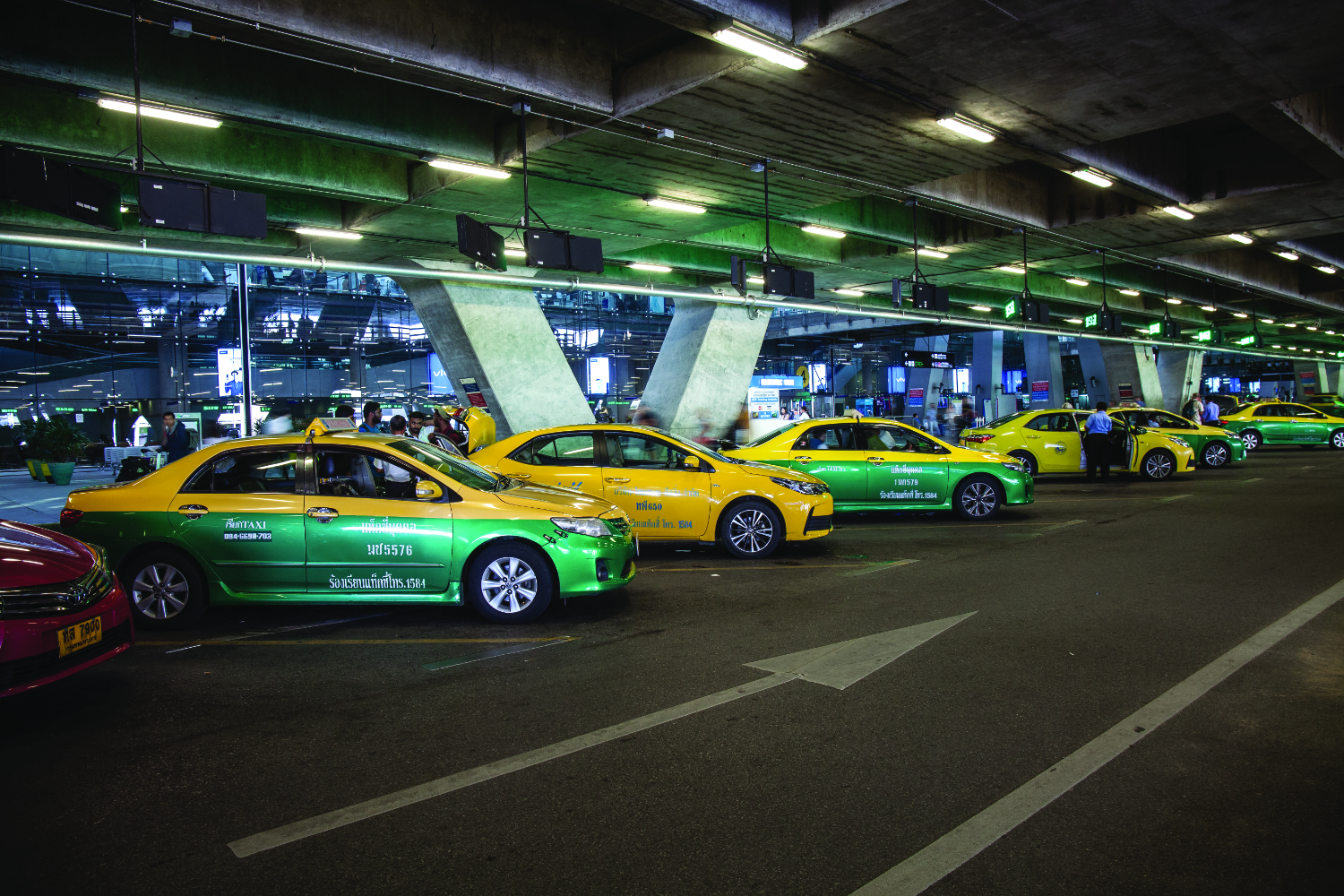
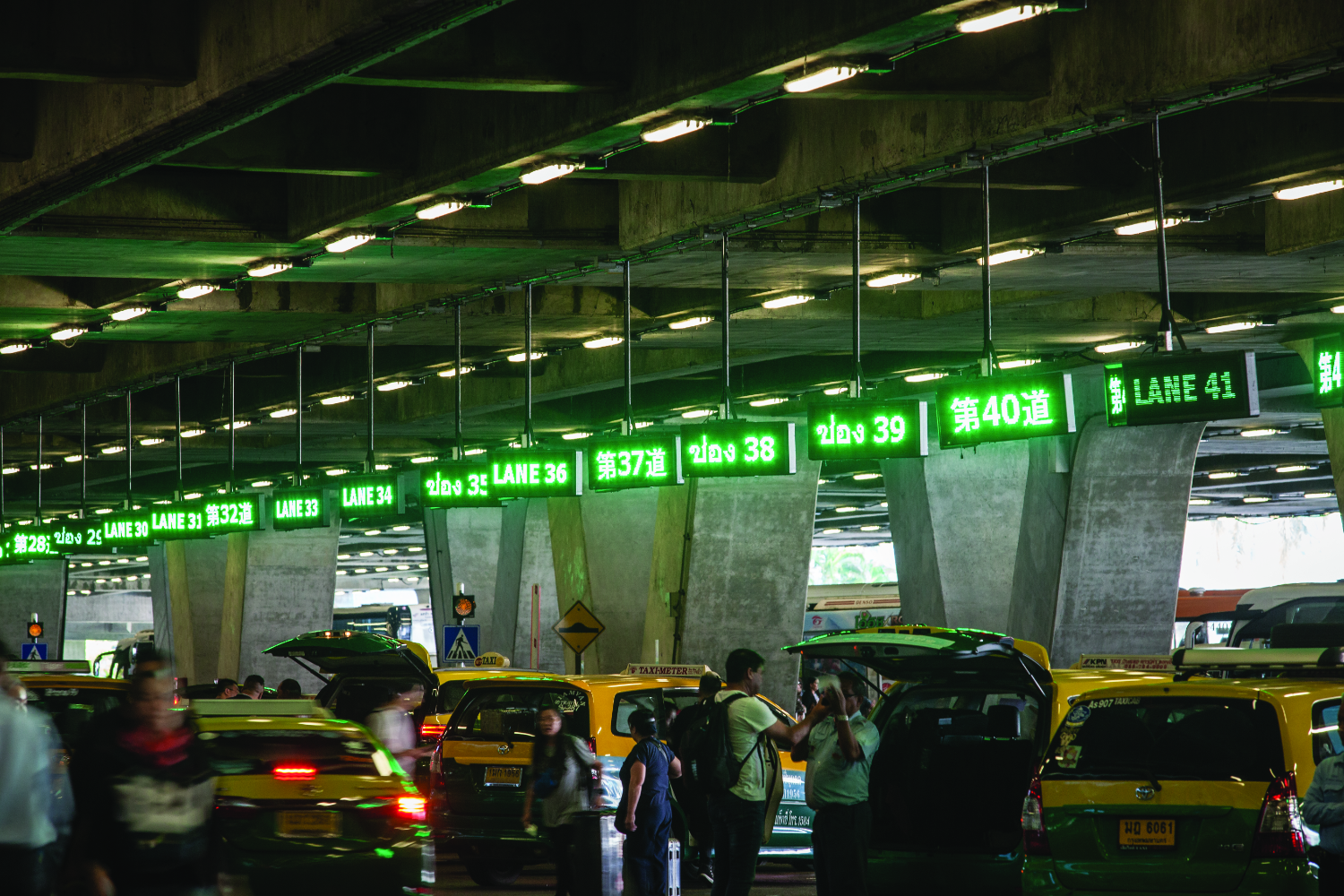
Automatic taxi kiosk supporting for the disabled
at Suvarnabhumi Airport
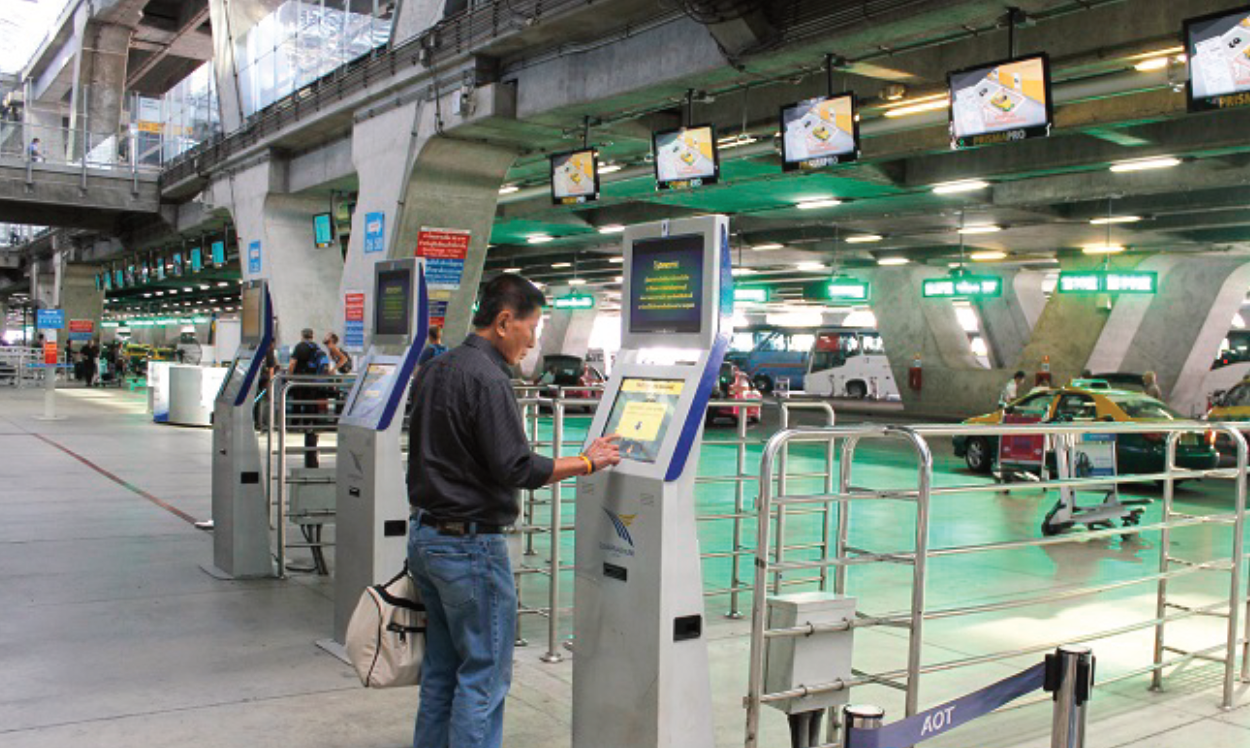

Suvarnabhumi Airport
The transportation network system that supports Suvarnabhumi Airport’s position as an air transportation hub consists of land transportation systems including Highway No.7 (Motorway), Buraphavidhi Expressway and Debaratana Road or State Highway No. 34 (Bang Na - Trat) connecting between Bangkok and the Eastern Economic Corridor of the country while the connectivity on rail transportation system is the Airport Rail Link.
Don Mueang International Airport
The transportation network system that supports the position of Don Mueang International Airport to be air transportation center includes the land transportation systems which are the Uttaraphimuk Elevated Tollway or the Don Mueang Tollway, Highway No. 1 (Phaholyothin Road), Highway No. 31 (Vibhavadi Rangsit Road), and the railway transportation system which are the North, the North-East, Suburban railway lines connecting the inner Bangkok area,
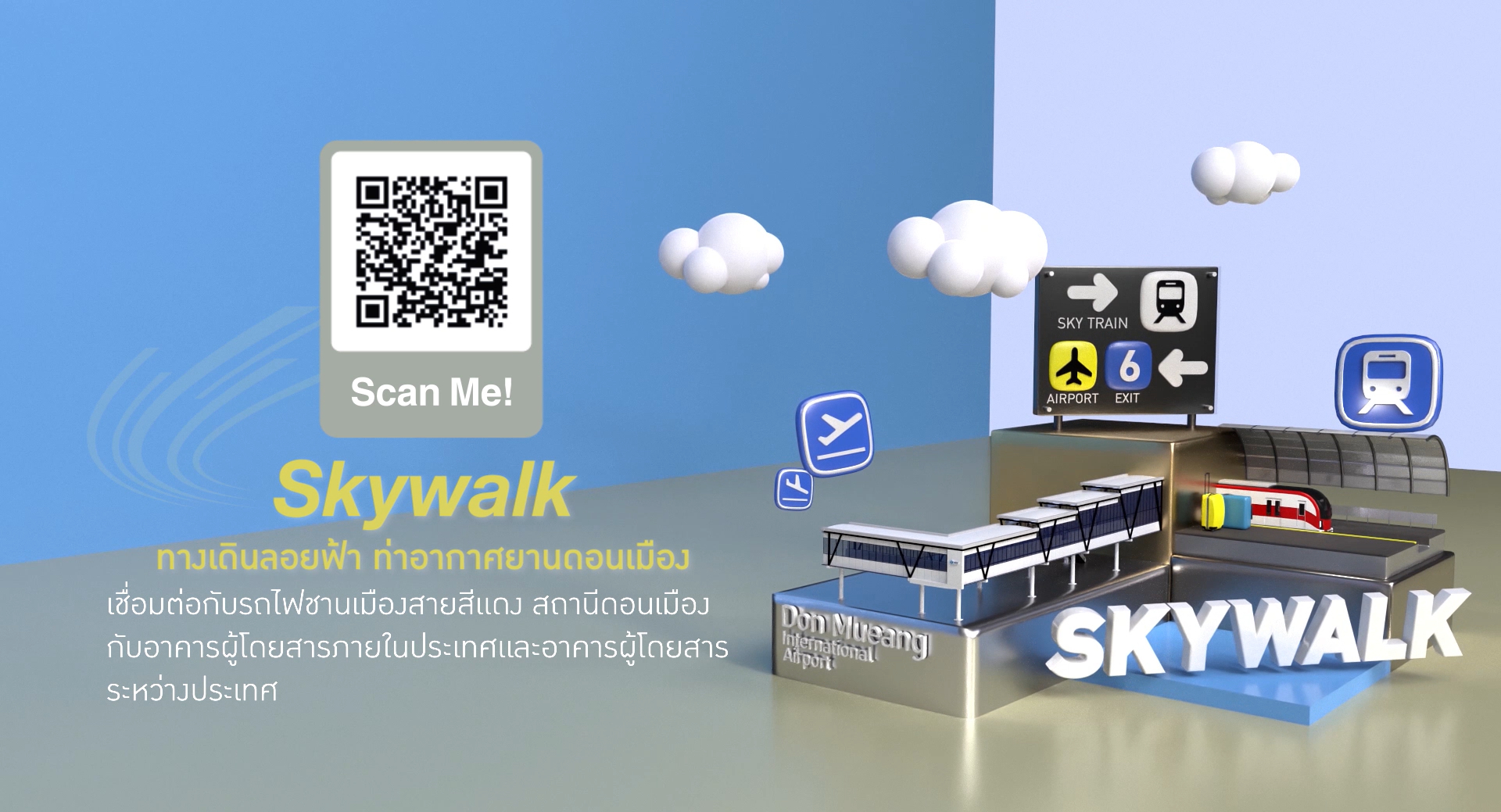
and the Red Line Suburban Railway Project which was opened for service in August 2021. AOT and the Mass Rapid Transit Authority of Thailand (MRTA) constructed a walkway connecting from Don Mueang Station of the Red Line Suburban Rail Project to Don Mueang Airport Passenger Terminal.
In the future, there will be a High-Speed Rail Project connecting 3 airports which are Don Mueang International Airport, Suvarnabhumi Airport and U-Tapao Airport in Rayong Province. It also includes the connection between Bangkok, and Thailand’s Eastern Economic Corridor and the High-Speed Rail Project that is expected to be implemented in the future to ensure continuity and efficiency in transitioning the journey mode from air to rail transportation.
Chiang Mai International Airport
The transportation network that supports Chiang Mai International Airport consists of land and rail transportation systems . The land transportation system is Highway 11 connecting the transportation network between Chiang Mai Province to tourist attractions in the province and nearby areas, and the rail transportation system is the North Rail line. In the future, the double-track railway extension project (Den Chai - Chiang Mai) will be operated in order to connect to the upper north provinces. Upon the completion of Thai-Japanese high-speed railway (Bangkok - Phitsanulok section), it can connect to the double-track railway network to a greater number of other major destinations. In addition, Chiang Mai Province is in the process of studying details of suitability, designing, and preparing bidding documents for the Red Line Mass Transit System (Nakornping Hospital - Mae Hia Saman Samakki Intersection), which will be connected to Chiang Mai International Airport in the future.
Hat Yai International Airport
The transportation network supporting Hat Yai International Airport consists of land transportation system namely Highway number 4135 connecting Songkhla Province to tourist attractions in the area and nearby provinces and the rail transportation system, namely the South Railway Line and the future double-track railway extension project (Hat Yai-Padang Besar) to connect to the upper south provinces. When the high-speed railway between Bangkok - Hua Hin is completed, it can connect the double-track railway network to a great number of other major destinations.
Phuket International Airport
The transportation network supporting the Phuket International Airport consists of land transportation system which is Highway 402 connecting Phuket Province to tourist attractions in the area and nearby provinces. In the future, the rail transportation system will be developed via the construction project of Phuket Mass Rapid Transit Railway line to connect Phuket International Airport to the urban areas including major tourist attractions of Phuket Province.
Mae Fah Luang-Chiang Rai International Airport
The transportation network supporting the Mae Fah Luang-Chiang Rai International Airport consists of land transportation system which is Highway No. 1209 connecting Chiang Rai Province to tourist attractions in the area and nearby provinces and the rail transportation system which is the future double-track railway (Den Chai - Chiang Rai - Chiang Khong) extension project to connect to the upper north provinces. When the Thai-Japanese high-speed railway (Bangkok - Phitsanulok section) is completed, it can connect the double-track railway network to a greater number of other major destinations.
Featured Projects
P-4 Parking Building Project
Suvarnabhumi Airport is scheduled to construct a 10-story car park building (for 1,200 cars) within the duty-free zone to help solve the problem of heavy traffic and insufficient parking for workers from various sectors, e.g., as Suvarnabhumi Airport Customs Office, Department of Agriculture, and Department of Export Promotion. The P-4 Parking Building Project is expected to complete at the end of 2024.

P-4 Parking Building Model
Free Zone Smart Access Project
AOT installed face recognition technology and license plate recognition system at the access control (AC) and the checking post (CP), Including the ID Card Self-Services Kiosk, only for personal access and vehicle for temporarily entering the duty-free zone of Suvarnabhumi Airport not more than 24 hours. This project aims to check the entry and exiting of the duty-free zone and increase operational efficiency between AOT and external agencies.
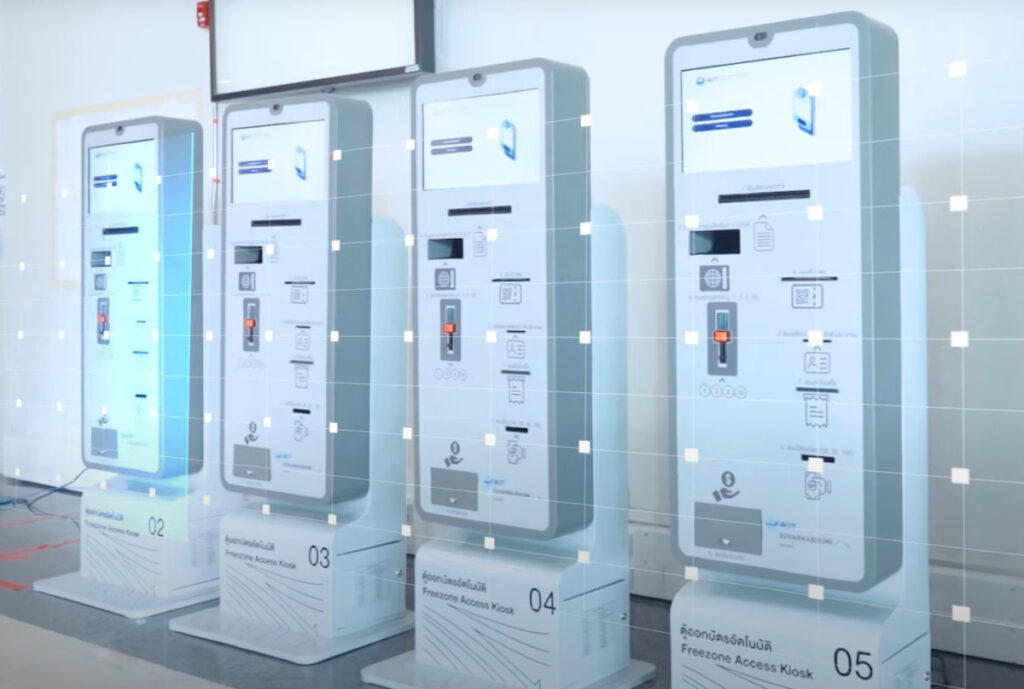
Freezone Access Kiosk
Facilitating Service Using of Individuals in Need of Special Assistance
To prepare airport personnel to serve all groups of passengers equally. AOT developed the service standard handbooks for persons in need of special assistance as a standard guideline for services in all airports. Moreover, training programs for providing services to persons in need of special assistance were organized for airport workers in an online format by having guest speakers from Mahidol University (Rajasuda College) and the Faculty of Nursing at Chulalongkorn University. The topics included:
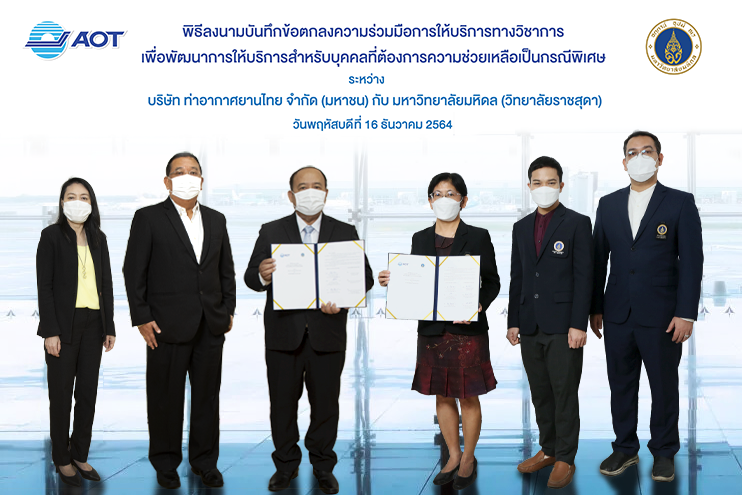
Last Updated: March 3, 2023
